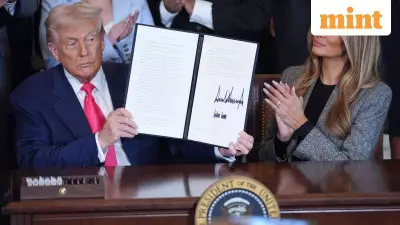
In a significant move for wildlife conservation, the National Board for Wildlife's standing committee has recommended reinstating legal protection for Rhesus Macaque monkeys under Schedule II of the Wildlife (Protection) Act, 1972. This decision comes after extensive campaigning by primate experts led by veteran primatologist Mewa Singh.
Why Protection Was Restored
Professor Mewa Singh, a distinguished ecology and animal behavior expert from the University of Mysore, spearheaded the campaign to restore legal safeguards for these monkeys. He authored a crucial letter to the Union Environment Minister that garnered support from over 60 primate and wildlife specialists, including international experts from Germany and the United States.
According to Professor Singh, the removal of protection had created numerous challenges. "Without official legal protection, their scientific management becomes difficult, and there is a threat of trafficking and cruelty," he explained. The absence of legal safeguards also meant forest departments lacked authority to intervene in conflict situations, leaving municipal bodies without proper expertise to handle the issues.
The Ecological Importance of Rhesus Monkeys
Despite perceptions of overpopulation, Rhesus Macaques play a vital role in maintaining ecological balance. These monkeys serve as crucial seed dispersers in forest ecosystems. Research conducted by Professor Singh's students has demonstrated that natural regeneration rates are significantly higher in areas where these monkeys are present compared to regions where they are absent.
Professor Singh highlighted the misconception about their numbers using the example of Bonnet Macaques in south India. "For 35 years, I have maintained records of Bonnet Macaques, and without those records, it would not have been known their population had declined 82 percent," he revealed. This dramatic decline occurred despite public perception that the species was abundant.
Managing Human-Monkey Conflict
The expert outlined a three-zone approach for effective management:
- Conservation zones where monkeys inhabit forests
- Co-existence zones in rural areas with low to moderate conflict
- Management zones requiring more intervention in high-conflict areas
Several states have already implemented successful strategies. Himachal Pradesh has established sterilization centers where monkeys are humanely trapped and sterilized to manage population growth. Professor Singh emphasized that scientific data collection, including baseline population figures and conflict frequency mapping, is essential for effective management.
Public behavior modification represents another critical aspect. "Feeding monkeys is a big problem, especially in urban areas, and this gives rise to conflict," Professor Singh noted. When monkeys receive nutritious human food, they become reluctant to leave urban areas, increasing conflict incidents.
With legal protections restored, local committees headed by divisional forest officers can now collaborate with primate experts and veterinary specialists to implement comprehensive management strategies. This move ensures that India's Rhesus Macaques receive the protection they need while enabling scientific approaches to human-wildlife coexistence.





